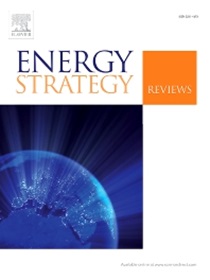RCEP成员国经济增长与二氧化碳排放脱钩状态及驱动因素演化分析
IF 7.9
2区 工程技术
Q1 ENERGY & FUELS
引用次数: 0
摘要
随着城市的发展和经济的增长,区域全面经济伙伴关系(RCEP)正式建立后,二氧化碳排放的增加成为一个挑战。为了应对这一挑战,本研究分析了RCEP经济和二氧化碳排放的历史趋势,并利用Tapio脱钩模型确定了各成员国的脱钩状态。在此基础上,利用对数平均分度指数(LMDI)模型得到了影响CO2排放的驱动因素,并结合LMDI和Tapio解耦模型分析了各成员国实现解耦过程的驱动力。结果表明:(1)日本是经济增长与二氧化碳排放脱钩关系最好的国家,而中国的经济增长与二氧化碳排放脱钩关系最稳定。总体而言,发达国家比发展中国家表现出更好的脱钩状态。从解耦状态的比例来看,最优状态强解耦(SD)和次优状态弱解耦(WD)分别占20.95%和31.43%。这两个国家的总比例超过50%,表明RCEP区域内的脱钩状况良好。(2)碳排放增长的主要驱动力是经济效应和人口效应,而碳排放减少的主要驱动力是能源强度效应。(3)能源强度效应是实现脱钩过程的主要驱动力,经济效应是实现脱钩过程的最大障碍。最后,为RCEP成员国早日实现经济增长与二氧化碳排放的脱钩进程提供政策建议。本文章由计算机程序翻译,如有差异,请以英文原文为准。
Evolution analysis of the decoupling state and drivers between economic growth and CO2 emissions in RCEP member countries
With the development of urban cities and their economic growth, the increase of CO2 emissions has become challenging, since the Regional Comprehensive Economic Partnership (RCEP) was officially established. To address this challenge, this study analyzes the historical trends in the RCEP economy and CO2 emissions and determines the decoupling state of each member country using the Tapio decoupling model. Furthermore, this research obtains the driving factors affecting CO2 emissions using the Logarithmic Mean Divisia Index (LMDI) model and analyses the driving forces of each member country to achieve the decoupling process by combining the LMDI and Tapio decoupling models. The results show that (1) Japan is the best decoupling country in terms of the decoupling relationship between economic growth and CO2 emissions, while China has the most stable performance. Overall, developed countries exhibit better decoupling state than developing countries. From the aspect of proportion of decoupling states, the optimal state strong decoupling (SD) and the sub-optimal state weak decoupling (WD) account for 20.95 % and 31.43 %, respectively. The total percentage of these two states exceeds 50 %, which indicates a good decoupling status in the RCEP region. (2) The key drivers of CO2 emission growth are economic and population effects, while the key driver of carbon emission reduction is the energy intensity effect. (3) The energy intensity effect is the main driver to achieve the decoupling process, while the greatest obstacle to the decoupling process is the economic effect. Finally, this study provides policy recommendations for the early realization of the decoupling process of economic growth and CO2 emissions in RCEP member countries.
求助全文
通过发布文献求助,成功后即可免费获取论文全文。
去求助
来源期刊

Energy Strategy Reviews
Energy-Energy (miscellaneous)
CiteScore
12.80
自引率
4.90%
发文量
167
审稿时长
40 weeks
期刊介绍:
Energy Strategy Reviews is a gold open access journal that provides authoritative content on strategic decision-making and vision-sharing related to society''s energy needs.
Energy Strategy Reviews publishes:
• Analyses
• Methodologies
• Case Studies
• Reviews
And by invitation:
• Report Reviews
• Viewpoints
 求助内容:
求助内容: 应助结果提醒方式:
应助结果提醒方式:


